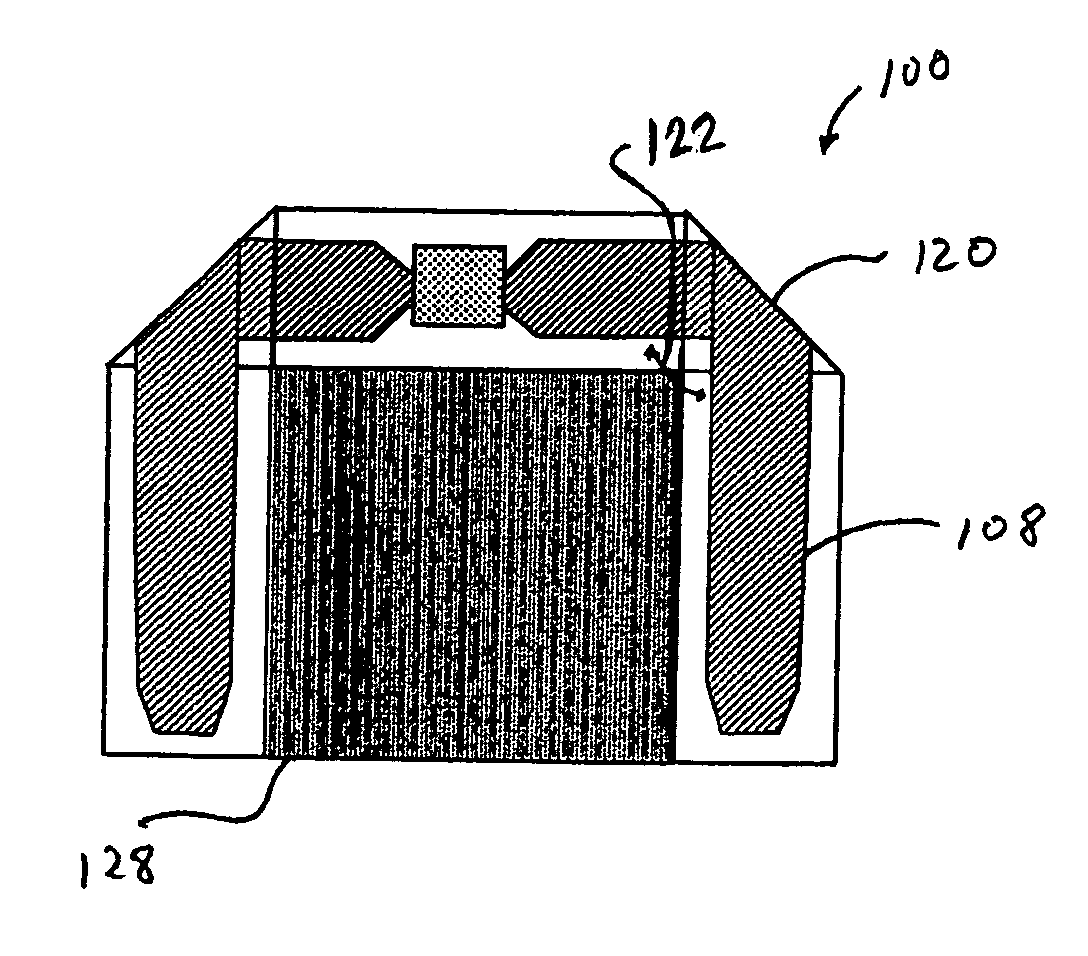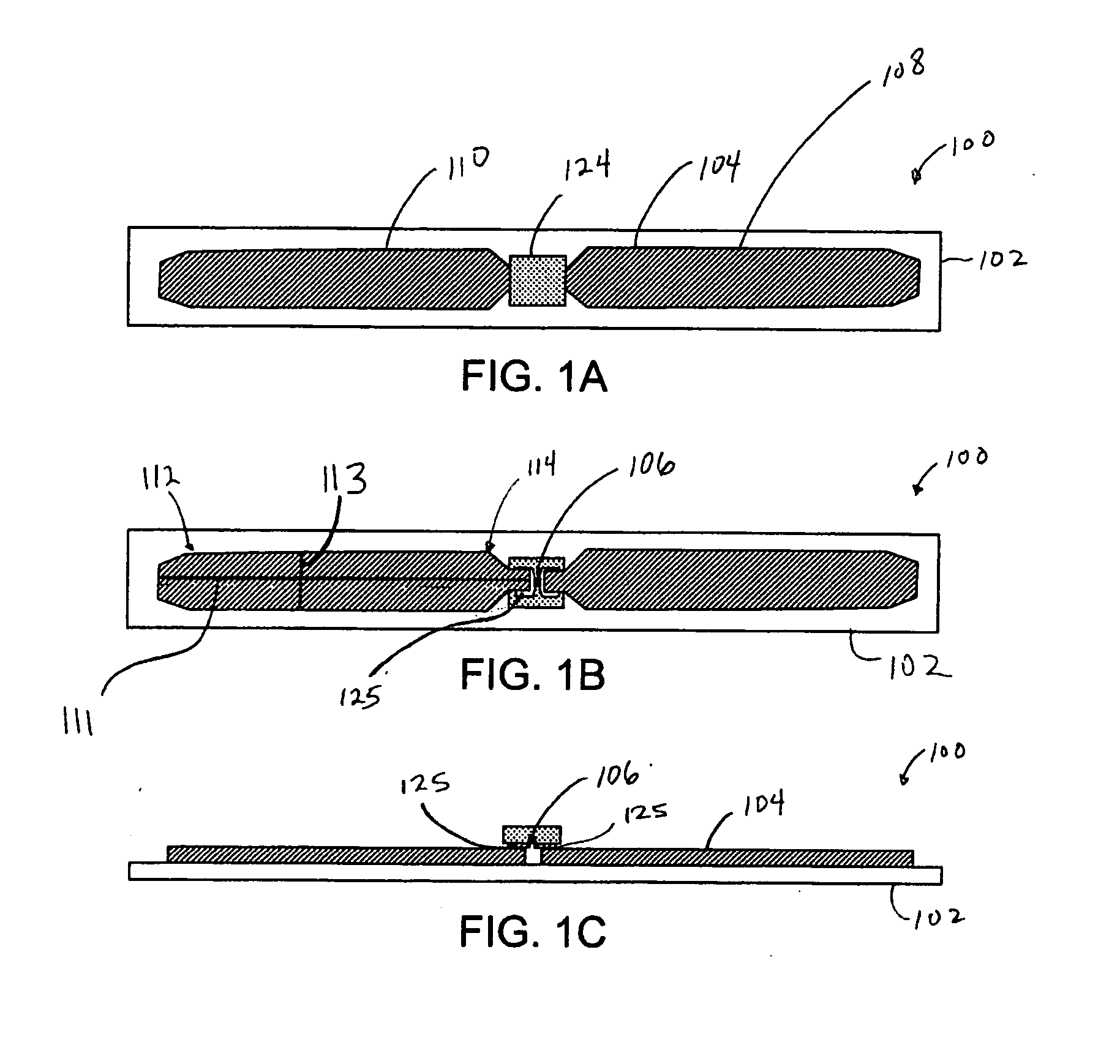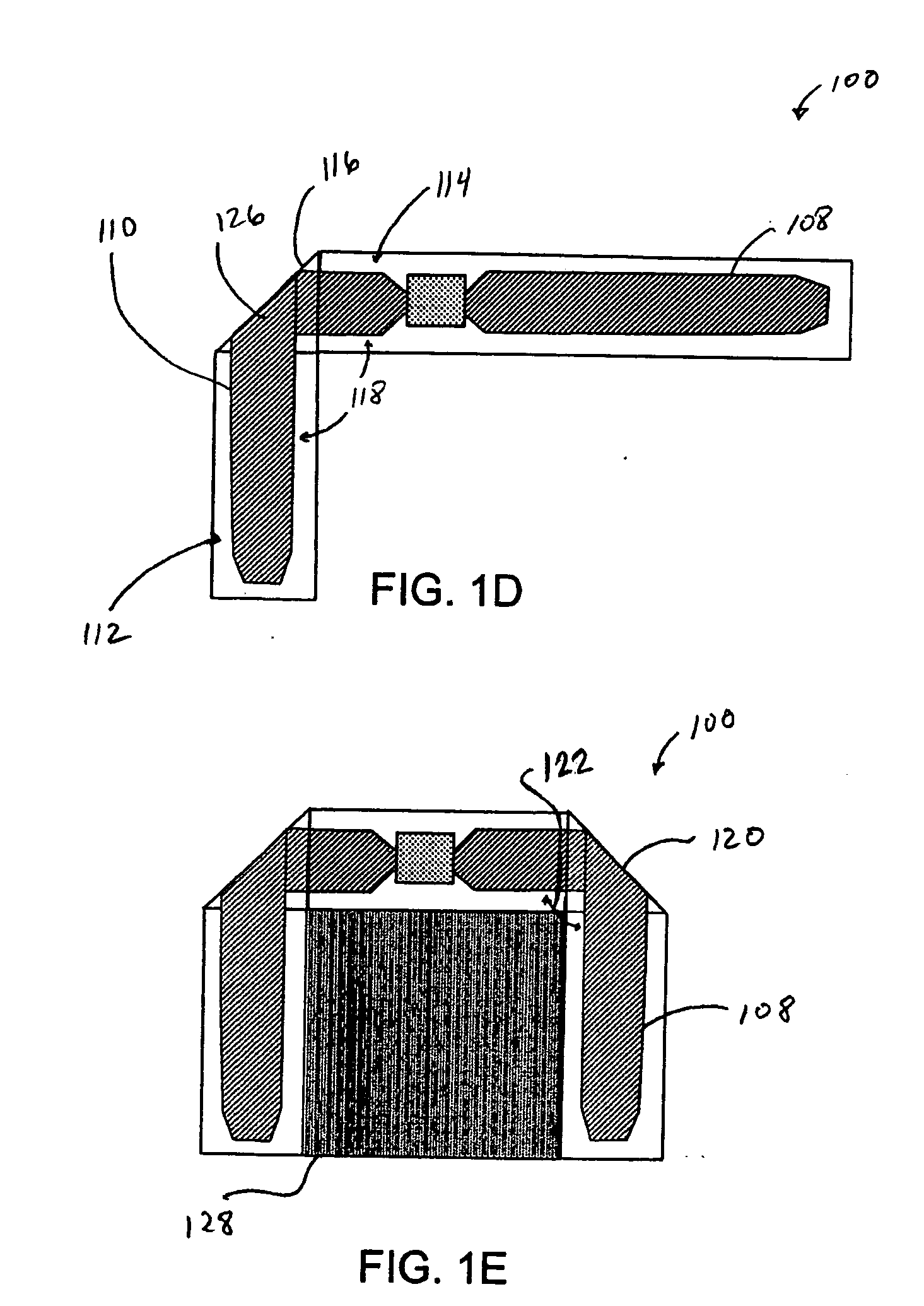Techniques for folded tag antennas
a technology of antennas and tags, applied in the field of folded antennas of radio frequency identification devices, can solve the problems of high density webs directly at odds with tag performance, difficult trade-offs, and low cost of end product, so as to improve multi-axis performance, improve multi-axis performance, and reduce web material
- Summary
- Abstract
- Description
- Claims
- Application Information
AI Technical Summary
Benefits of technology
Problems solved by technology
Method used
Image
Examples
Embodiment Construction
[0026] The following description and drawings are illustrative of the invention and are not to be construed as limiting the invention. Numerous specific details are described to provide a thorough understanding of the present invention. However, in certain instances, well known or conventional details are not described in order to avoid obscuring the description of the present invention. References to one or an embodiment in the present disclosure are not necessarily references to the same embodiment; and, such references mean at least one.
[0027] Inlays, also referred to as inlets, include at least an integrated circuit (IC) and antenna on a substrate. Inlays can be made into tags (inlays with a protective over laminate) or converted into finished smart (RFID) labels. FIGS. 1A-1E illustrate an RFID inlay 100 according to an embodiment of the present invention. Top, bottom, and cross-sectional views of inlay 100 are respectively shown in FIGS. 1A-1C. Inlay 100 includes a substrate 1...
PUM
 Login to View More
Login to View More Abstract
Description
Claims
Application Information
 Login to View More
Login to View More - R&D
- Intellectual Property
- Life Sciences
- Materials
- Tech Scout
- Unparalleled Data Quality
- Higher Quality Content
- 60% Fewer Hallucinations
Browse by: Latest US Patents, China's latest patents, Technical Efficacy Thesaurus, Application Domain, Technology Topic, Popular Technical Reports.
© 2025 PatSnap. All rights reserved.Legal|Privacy policy|Modern Slavery Act Transparency Statement|Sitemap|About US| Contact US: help@patsnap.com



